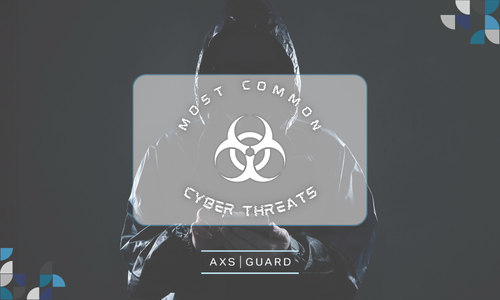

Types
- Spam
- Malware
- Viruses
- Online scams
- Phishing
- Botnets
- DDoS attacks
- APT (Advanced Persistent Threat)
- Social Engineering
1. Spam
Spam refers to unsolicited and often malicious or irrelevant messages sent in bulk via various online communication channels, such as email, social media and other messaging platforms. These messages are usually intended to mislead recipients, promote questionable products or services, or distribute malware.
2. Malware
Malware, or malicious software, refers to software specifically designed to disrupt, damage, or gain unauthorized access to computer systems or networks. Malware can take a variety of forms, including viruses, worms, Trojan horses, ransomware, and spyware. Malware is typically used to steal sensitive information, divert computer resources, or cause other harmful effects on targeted systems.
3. Viruses
A virus file is a type of malware that can replicate and spread itself to other files and programs on a computer or network.
Once activated, the virus can perform various malicious actions, such as corrupting or deleting data, disrupting system operations, or granting unauthorized access to the infected system.
4. Online scams
These are fraudulent schemes, carried out over the internet, aiming to deceive users. Scammers employ various tactics, such as fake websites, misleading emails, or online advertisements, to trick unsuspecting individuals into giving up personal information, making payments, or clicking on malicious links.
5. Phishing
Phishing is a cyber attack in which fraudulent messages, usually sent by email, aim to trick individuals into revealing sensitive information, such as passwords or financial information, or taking actions that compromise their security. These messages often appear to come from legitimate sources, encouraging unsuspecting recipients to click on malicious links.
6. Botnets
A botnet is a network of computers infected by malicious software, controlled by a single attacker without the knowledge of the owners. These compromised machines are used to launch various cyber attacks, such as distributed denial-of-service attacks, sending spam, or spreading malware.
7. DDoS attack
DDoS stands for Distributed Denial-of-Service. This type of attack overwhelms websites or online services with a flood of internet traffic, making them unavailable to legitimate users. Imagine a highway jammed with fake traffic, preventing real users from reaching their destination. The targeted website becomes slow or unresponsive, potentially crashing altogether.
8. APT (Advanced Persistent Threat)
An advanced persistent threat (APT) is a sophisticated cyber attack where an intruder gains unauthorized access to a network and remains undetected for a long period. APTs primarily focus on stealing sensitive data, such as intellectual property or financial information, rather than causing immediate disruption to the network. They can be difficult to detect due to their stealthy nature and long-term goals.
9. Social Engineering
Social engineering exploits human vulnerabilities rather than directly attacking computer systems. Hackers prey on typical human emotions and cognitive biases like curiosity, trust, greed, fear, and ignorance to manipulate victims into revealing confidential data or taking actions that compromise security. One common tactic is to leave infected USB drives lying around. A curious victim might plug it in, unknowingly installing malware or granting unauthorized access.
Can I protect my organization against these threats?
Absolutely! While cybercriminals are constantly developing new tricks, security solutions are also rapidly evolving to counter these threats.
However, the best defenses are multi-layered, as specific threats require specific protection.
AXS Guard solutions can significantly reduce the risk of attacks by stopping them before they cause major damage. However, it's important to remember that no security solution is foolproof. A layered approach, including user awareness training and incident response plans, is crucial to minimize potential damage from a cyber attack.
Our Observe & Protect solution provides a comprehensive and high-performance managed cybersecurity package suitable for businesses of all sizes. This package includes a variety of tools to help you detect, prevent, and respond to cyber threats.

Most Common Cyber Threats (2024)